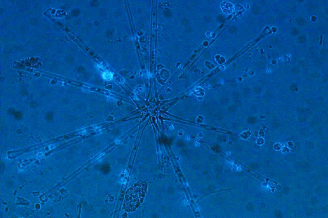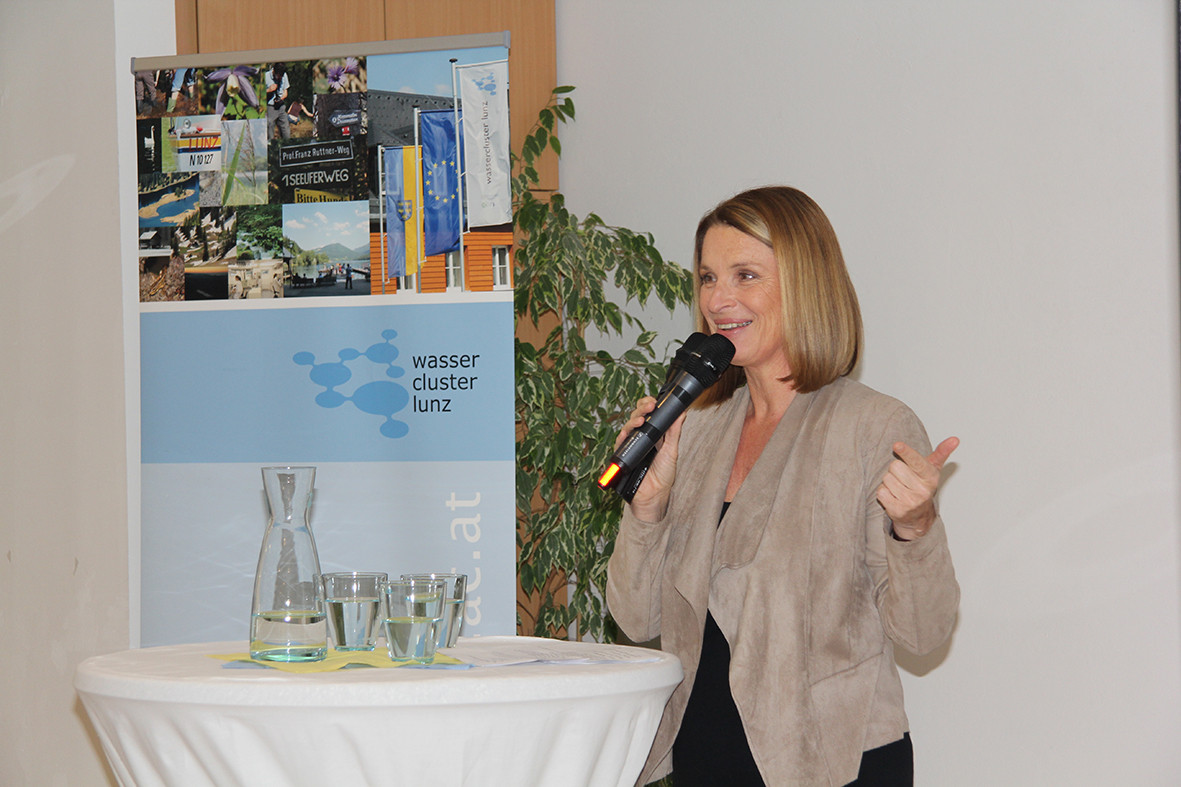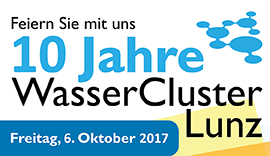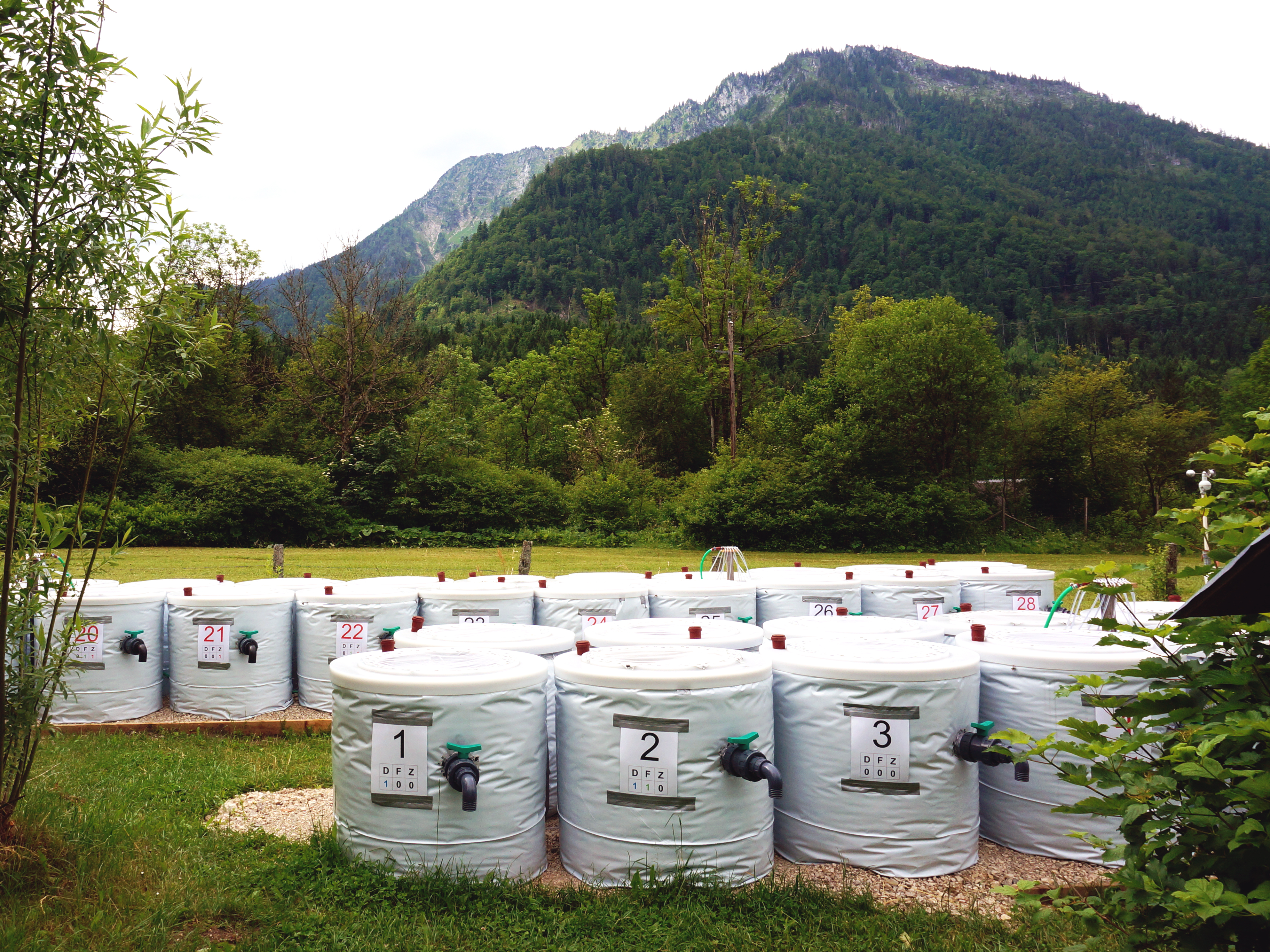In October the new FWF project “FUNGUP – Role of phytoplankton fungal parasites in trophic transfer and food web functioning” started. Project leader is Serena Rasconi, it is a project of the working group AQUASCALE and LIPTOX and will last until 2021. The picture shows the diatom Asterionella parasitized by chytrids (stained blue under the UV light, Lake Lunz July 2017).
More information about the project you find here.
Since ten years there is research on aquatic ecosystems at the WasserCluster Lunz. On Friday, 6th October 2017, we were celebrating this 10th Anniversary together with prominent guests from science and politics.
In the afternoon we opened our door for interested visitors. On guided tours through the house, boat tours to our measuring island on the lake, lectures and infopoints the guest had the possibility to learn more about the research at the WasserCluster Lunz. Special treat was the WasserCluster beer "Für helle Köpfe" which was brewed from water from the Lake Lunz.
Fotos from the event you find here.
On 28.9 and 2.10.2017 there was the possibility to visit the "Forschungsschiff MS Wissenschaft" in Tulln and Krems. WasserCluster Lunz was represented through Gabriele Weigelhofer with the talk to „ORCA – Organischer Kohlenstoff in Bächen“. Goul of the event was to, inform about the ressource water.
Fotos from the event you find here (© Klaus Ranger)
on Friday, 6th October 2017, 13:00 - 18:00, we are celebrating the 10th Anniversary of WasserCluster Lunz. We want look back at the research on aquatic ecosystems at the WasserCluster Lunz and open new perspectives - together with partners, supporters and interested people.
We invite warmly to this event in our house. There will be infopoints and highlights of limnology, guided tours, food from the region and much more waiting for you.
More information you find here.
WasserCluster Lunz is one of nine partners, from six different countries, working on the project „FRAMWAT – Framework for improving water balance and nutrient mitigation by applying small water retention measures“. Under the leading of the Warsaw University of Life Sciences they will work the next three years. FramWat will provide decision makers with appropriate tools to incorporate Natural (Small) Water Retention Measures (N(S)WRM) into the next cycle of River Basin Management Plans and offer guidance and raise awareness about the importance of horizontal integration of different planning frameworks.
More information you find here.
WasserCluster Lunz was part of the "Forschungsfest NÖ" which took place on Friday 15th September 2017 at the Palais Niederösterreich. The Forschungsfest NÖ is about interaction between scientists and especially children and the youth. Main goal was to explain scientific topics in a comprehensible way and to make youth curious about science.
More information you find here
WasserCluster researcher Zsófia Horváth and Robert Ptacnik successfully applied for a sDiv working group, sTURN.
The project will bring together 21 scientists to establish a mechanistic link between spatial and temporal turnover in metacommunities, and will include exciting brainstorming at the iDiv centre in Leipzig.
Read more here











